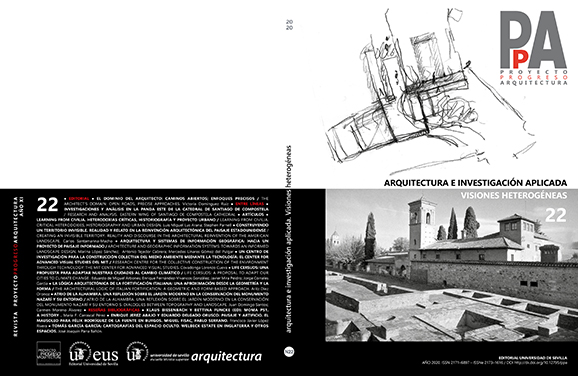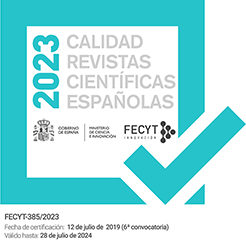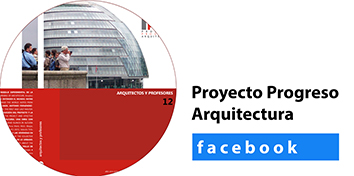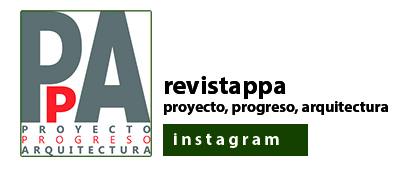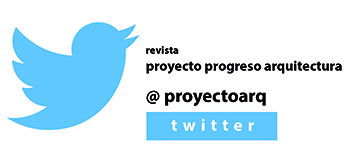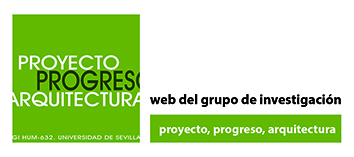UN CENTRO DE INVESTIGACIÓN PARA LA CONSTRUCCIÓN COLECTIVA DEL MEDIO AMBIENTE MEDIANTE LA TECNOLOGÍA: EL CENTER FOR ADVANCED VISUAL STUDIES DEL MIT / A RESEARCH CENTRE FOR THE COLLECTIVE CONSTRUCTION OF THE ENVIRONMENT THROUGH TECHNOLOGY: THE MIT CENTER FOR ADVANCED VISUAL STUDIES
DOI:
https://doi.org/10.12795/ppa.2020.i22.05Palabras clave:
arquitectura, tecnología, proyecto urbano, Kepes, medio ambiente / Architecture, technology, urban project, environmentResumen
RESUMEN Con motivo de la celebración del 150 aniversario de la Escuela de Arquitectura y Planeamiento Urbano del Massachusetts Institute of Technology (MIT), cuyos actos de conmemoración acaban de finalizar, el presente artículo plantea una revisión de algunas experiencias interesantes que tuvieron lugar tras la inauguración del Center for Advanced Visual Studies (CAVS) del MIT, un centro de investigación nacido a finales de los años sesenta, orientado a la realización de proyectos medioambientales que incorporaban nuevas tecnologías, gracias a la colaboración entre profesionales de distintas disciplinas. Fundado por György Kepes en 1968, quien ocupó la dirección del centro hasta el verano de 1974, el CAVS se creó con el objetivo de desarrollar investigaciones en el campo del arte, la arquitectura y el urbanismo que demostraran la viabilidad de las nuevas tecnologías de la información como herramienta de creación, y su aplicación en proyectos colaborativos de escala urbana que involucraban a la ciudadanía, buscando paliar el impacto ambiental producido por el rápido crecimiento de las ciudades modernas. Para ello, el artículo comienza centrándose en la figura de Kepes, impulsor de la iniciativa, destacando aquellas líneas de trabajo que desarrolló a lo largo de su trayectoria profesional, que influyeron directamente en su concepción del centro, y ofreciendo algunas referencias sobre el contexto en el que se funda el CAVS. A continuación, plantea el estudio de una selección de obras significativas realizadas por los primeros residentes que trabajaron directamente bajo la dirección de Kepes, con el fin de valorar su aportación al campo de la arquitectura y, más concretamente, a la construcción colectiva del medio ambiente mediante la tecnología.
SUMMARY On the occasion of the celebration of the 150th anniversary of the School of Architecture and Planning of the Massachusetts Institute of Technology (MIT), whose commemorative events have just ended, this article presents a review of some interesting experiences that took place after the inauguration of the MIT Center for Advanced Visual Studies (CAVS), a research centre founded in the late sixties, aimed at carrying out environmental projects that incorporated new technologies, thanks to the collaboration among professionals from different fields. Founded in 1968 by György Kepes, who headed the centre until the summer of 1974, the CAVS was created with the aim of developing research in the field of Art, Architecture and Urban Planning, to prove the viability of information technology as a new creative tool, and its application in collaborative urban-scale projects involving citizens, seeking to mitigate the environmental impact produced by the rapid growth of modern cities. The article begins by focusing on the figure of Kepes, the promoter of the initiative, and highlights those lines of work that he developed, throughout his professional career, which directly influenced his conception of the centre and offers some references on the context in which he founded the CAVS. A study is also made of a selection of significant works carried out by the first fellows who worked under the direction of Kepes, in order to assess their contribution to the field of Architecture, and, more specifically, to the collective construction of the environment through technology.
Descargas
Métricas
Citas
ARNING, Bill. György Kepes’ Vision & Value, 1965-1972, Cambridge, Massachusetts: ProQuest, UMI Dissertation Publishing, 2008.
BURNHAM, Jack. Beyond Modern Sculpture: The Effects of Science and Technology on the Sculpture of this Century. Nueva York: George Braziller, 1968.
BURNHAM, Jack. Software, Information Technology (catálogo de exposición). Nueva York: Jewish Museum, 1970.
BURNHAM, Jack. Art and Technology: The Panacea That Failed. En: Video Culture: A Critical Investigation. Rochester: John G. Hanhardt-Visual Studies Workshop Press, 1986. pp. 240-241.
CONNOR, Russell (1970). Vision and Television (catálogo de exposición). Waltham, Massachusetts: Brandais University.
ELLUL, Jacques. The Technological Society. Nueva York: Knopf, 1964.
GARNETT, William A. To See America: Splendors of the Bare and Beautiful Southwest. En: Life Magazine, marzo 1968, pp. 48-60.
GUNTER, Virginia. Earth, Air, Fire, Water: Elements of Art. Boston, Massachusetts: Museum of Fine Arts, 1971.
KEPES, György. Language of Vision. Chicago: Paul Theobald, 1944.
KEPES, György. The New Landscape in Art & Science. Chicago: Paul Theobald, 1956.
KEPES, György. Proposal for the Center for Advanced Visual Studies. En: Kepes, György (1963-1992). Serie 5: Individuals. Box 25, Folder 12. Cambridge, Massachusetts: CAVSSC, MIT Program in Art, Culture & Technology, 1965.
KEPES, György. Vision and Value Series. Nueva York: George Braziller, 1965.
KEPES, György. Structure in Art and in Science. Nueva York: George Braziller, 1965.
KEPES, György. Center for Advanced Visual Studies. En: Report of the President and the Chancellor 1967-1968, Cambridge, Massachusetts: MIT Institute Archives, 1968.
KEPES, György. The lost Pageantry of Nature. En: Artscanada. 1968, n.º 25, pp. 30-40.
KEPES, György. Explorations. Washington, D.C.: Smithsonian Institution Press, 1970.
LYNCH, Kevin. The Image of the City. Cambridge, Massachusetts: MIT Press, 1960.
MIT and the Pentagon (anón.). En: Time Magazine. Boston, noviembre 1969, pp. 48-49.
MOHOLY-NAGY, László. Vision in Motion. Chicago: Paul Theobald, 1947.
MOHOLY-NAGY, László. La nueva visión y reseña de un artista. Buenos Aires: Ed. Infinito, 1963.
PIENE, Otto. Piene: Elements (catálogo de exposición). Nueva York: Howard Wise Gallery, 1969.
REICHARDT, Jasia. Cybernetic Serendipity. The Computer and the Arts (catálogo de exposición). Londres: Studio International, 1968.
REICHARDT, Jasia. In the beginning. En: White Heat Cold Logic, British Computer Art 1960-1980, The Cambridge, Massachusetts: MIT Press, 2008.
SUTTON, Gloria. The Experience Machine. Stan Van der Beek’s Movie-Drome and Expanded Cinema. Cambridge, Massachusetts: MIT Press, 2015.
TOVISH, Harold. Harold Tovish (catálogo de exposición). Nueva York: Solomon R. Guggenheim Museum, 1968.
TSAI, Wen-Ying. Cybernetic Scuptures Environment (catálogo de exposición). Pittsburgh: Frick Fine Arts Building, University Art Gallery, 1971.
Descargas
Publicado
Cómo citar
Número
Sección
Licencia
Las ediciones impresa y electrónica de esta Revista son editadas por el Secretariado de Publicaciones de la Universidad de Sevilla, siendo necesario citar la procedencia en cualquier reproducción parcial o total.
Salvo indicación contraria, todos los contenidos de la edición electrónica se distribuyen bajo una licencia de uso y distribución “Creative Commons Atribución-NoComercial-SinDerivar 4.0 Internacional” ![]() . Puede consultar desde aquí la versión informativa y el texto legal de la licencia. Esta circunstancia ha de hacerse constar expresamente de esta forma cuando sea necesario.
. Puede consultar desde aquí la versión informativa y el texto legal de la licencia. Esta circunstancia ha de hacerse constar expresamente de esta forma cuando sea necesario.
Los autores/as que publiquen en esta revista aceptan las siguientes condiciones:
- Los autores/as conservan los derechos de autor y ceden a la revista el derecho de la primera publicación, con el trabajo registrado con la licencia de atribución de Creative Commons, que permite a terceros utilizar lo publicado siempre que mencionen la autoría del trabajo y a la primera publicación en esta revista.
- Los autores/as pueden realizar otros acuerdos contractuales independientes y adicionales para la distribución no exclusiva de la versión del artículo publicado en esta revista (p. ej., incluirlo en un repositorio institucional o publicarlo en un libro) siempre que indiquen claramente que el trabajo se publicó por primera vez en esta revista.
- Se permite y recomienda a los autores/as a publicar su trabajo en Internet (por ejemplo en páginas institucionales o personales) antes y durante el proceso de revisión y publicación, ya que puede conducir a intercambios productivos y a una mayor y más rápida difusión del trabajo publicado (vea The Effect of Open Access).
